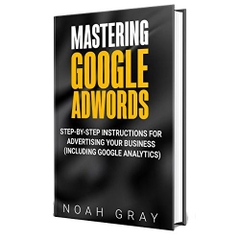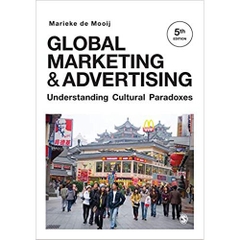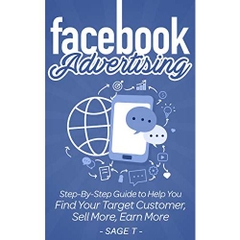-
-
-
Tổng tiền thanh toán:
-
-
Thông tin
-
Tìm sách theo yêu cầu
The Challenge:
Built to Last, the defining management study of the nineties, showed how great companies triumph over time and how long-term sustained performance can be engineered into the DNA of an enterprise from the verybeginning.
But what about the company that is not born with great DNA? How can good companies, mediocre companies, even bad companies achieve enduring greatness?
The Study:
For years, this question preyed on the mind of Jim Collins. Are there companies that defy gravity and convert long-term mediocrity or worse into long-term superiority? And if so, what are the universal distinguishing characteristics that cause a company to go from good to great?
The Standards:
Using tough benchmarks, Collins and his research team identified a set of elite companies that made the leap to great results and sustained those results for at least fifteen years. How great? After the leap, the good-to-great companies generated cumulative stock returns that beat the general stock market by an average of seven times in fifteen years, better than twice the results delivered by a composite index of the world's greatest companies, including Coca-Cola, Intel, General Electric, and Merck.
The Comparisons:
The research team contrasted the good-to-great companies with a carefully selected set of comparison companies that failed to make the leap from good to great. What was different? Why did one set of companies become truly great performers while the other set remained only good?
Over five years, the team analyzed the histories of all twenty-eight companies in the study. After sifting through mountains of data and thousands of pages of interviews, Collins and his crew discovered the key determinants of greatness -- why some companies make the leap and others don't.
The Findings:
The findings of the Good to Great study will surprise many readers and shed light on virtually every area of management strategy and practice. The findings include:
- Level 5 Leaders: The research team was shocked to discover the type of leadership required to achieve greatness.
- The Hedgehog Concept: (Simplicity within the Three Circles): To go from good to great requires transcending the curse of competence.
- A Culture of Discipline: When you combine a culture of discipline with an ethic of entrepreneurship, you get the magical alchemy of great results. Technology Accelerators: Good-to-great companies think differently about the role of technology.
- The Flywheel and the Doom Loop: Those who launch radical change programs and wrenching restructurings will almost certainly fail to make the leap.
“Some of the key concepts discerned in the study,” comments Jim Collins, "fly in the face of our modern business culture and will, quite frankly, upset some people.”
Perhaps, but who can afford to ignore these findings?
Product Details
Hardcover: 300 pages
- Publisher: HarperBusiness; 1 edition (October 16, 2001)
- Language: English
- ISBN-10: 0066620996
- ISBN-13: 978-0066620992
- Product Dimensions: 9.3 x 6.4 x 1.1 inches
- Shipping Weight: 1.1 pounds (View shipping rates and policies)
- Average Customer Review: 4.4 out of 5 stars See all reviews (1,337 customer reviews)
- Amazon Best Sellers Rank: #267 in Books (See Top 100 in Books)
- #1 in Books > Business & Money > Biography & History > Company Profiles
- #2 in Books > Business & Money > Management & Leadership > Systems & Planning
- #2 in Books > Business & Money > Management & Leadership > Management
Editorial Reviews
Amazon.com Review
Five years ago, Jim Collins asked the question, "Can a good company become a great company and if so, how?" In Good to Great Collins, the author of Built to Last, concludes that it is possible, but finds there are no silver bullets. Collins and his team of researchers began their quest by sorting through a list of 1,435 companies, looking for those that made substantial improvements in their performance over time. They finally settled on 11--including Fannie Mae, Gillette, Walgreens, and Wells Fargo--and discovered common traits that challenged many of the conventional notions of corporate success. Making the transition from good to great doesn't require a high-profile CEO, the latest technology, innovative change management, or even a fine-tuned business strategy. At the heart of those rare and truly great companies was a corporate culture that rigorously found and promoted disciplined people to think and act in a disciplined manner. Peppered with dozens of stories and examples from the great and not so great, the book offers a well-reasoned road map to excellence that any organization would do well to consider. Like Built to Last, Good to Great is one of those books that managers and CEOs will be reading and rereading for years to come. --Harry C. Edwards
From Publishers Weekly
In what Collins terms a prequel to the bestseller Built to Last he wrote with Jerry Porras, this worthwhile effort explores the way good organizations can be turned into ones that produce great, sustained results. To find the keys to greatness, Collins's 21-person research team (at his management research firm) read and coded 6,000 articles, generated more than 2,000 pages of interview transcripts and created 384 megabytes of computer data in a five-year project. That Collins is able to distill the findings into a cogent, well-argued and instructive guide is a testament to his writing skills. After establishing a definition of a good-to-great transition that involves a 10-year fallow period followed by 15 years of increased profits, Collins's crew combed through every company that has made the Fortune 500 (approximately 1,400) and found 11 that met their criteria, including Walgreens, Kimberly Clark and Circuit City. At the heart of the findings about these companies' stellar successes is what Collins calls the Hedgehog Concept, a product or service that leads a company to outshine all worldwide competitors, that drives a company's economic engine and that a company is passionate about. While the companies that achieved greatness were all in different industries, each engaged in versions of Collins's strategies. While some of the overall findings are counterintuitive (e.g., the most effective leaders are humble and strong-willed rather than outgoing), many of Collins's perspectives on running a business are amazingly simple and commonsense. This is not to suggest, however, that executives at all levels wouldn't benefit from reading this book; after all, only 11 companies managed to figure out how to change their B grade to an A on their own.
Copyright 2001 Cahners Business Information, Inc.
Most Helpful Customer Reviews
655 of 734 people found the following review helpfulBy Donald Mitchell HALL OF FAMETOP 500 REVIEWERVINE VOICE on October 16, 2001
Format: Hardcover
This study was stimulated by Mr. Bill Meehan's (head of McKinsey in San Francisco) observation that Built to Last wasn't very helpful to companies, because the firms studied had always been great. Most companies have been good, and never great. What should these firms do?
Jim Collins and his team have done an enormous amount of interesting work to determine whether a good company can be come a great company, and how. The answer to the former question is "yes," assuming that the 11 of 1435 Fortune 500 companies did not make it there by accident. The answer to the latter is less clear. The study group identified a number of characteristics that their 11 companies had in common, which were much less frequently present in comparison companies. However, the study inexplicably fails to look at these same characteristics to see how often they succeed in the general population of companies. If these characteristics work 100 percent of the time, you really have something. If they work 5 percent of the time, then not too much is proven.
How were the 11 study companies selected? The criteria take pages to explain in an appendix. Let me simplify by saying that their stock price growth had to be in a range from somewhat lower than to not much higher than the market averages for 15 years. Then, in the next 15 years the stocks had to soar versus the market averages and comparison companies while remaining independent. That's hard to do. The selected companies are Abbott Laboratories, Circuit City, Fannie Mae, Gillette, Kimberly-Clark, Kroger, Nucor, Philip Morris, Pitney Bowes, Walgreen, and Wells Fargo.
As to the "how," attention was focused on what happened before and during the transition from average performance to high performance. Interviews, quantitative analyses, and business press reports were studied. Clearly, there's a tendency to see things a little bit with 20-20 hindsight in such a situation. Since this study started in 1996, it was dealing with facts that were already quite old while they were being examined. Bias is likely.
The key conclusions as to "how" included the following:
(1) a series of CEOs (promoted from within) who combined "personal humility and professional will" focused on making a great company;
(2) an initial focus on eliminating weak people, adding top performing ones, and establishing a culture of top talent putting out extraordinary effort;
(3) then shifting attention to staring at and thinking unceasingly about the hardest facts about the company's situation;
(4) using facts to develop a simple concept that is iteratively reconsidered to focus action on improving performance;
(5) establishing and maintaining a corporate culture of discipline built around commitments, with freedom about how to meet those promises;
(6) using technology to accelerate progress when it fits the company's concept of what it wants to become; and
(7) the company builds momentum from consistent efforts behind its concept that are reinforced by success.
Then, a connection is made to how these 7 conditions can provide the foundation for establishing a Built to Last type of company that can outperform the competition over many decades.
One potential criticism of the study is that its conclusions could be dated. Former Stanford professor Collins argues that he has uncovered basic facts about human organizations that will be unchanging.
I compared the conclusions in this book with my own studies of top performing CEOs and companies in the 1988-2001 time period. I noticed two major differences that suggest a shift in "best practice" standards. First, those who outperform now have developed processes that create major improvements in their operating business models every 2-5 years. Second, senior management development is focused around improving a culture for defining and implementing such improvements. I suspect that item (4) above was an embryonic predecessor to these new dimensions, which occur much more frequently now than in this study.
Next, I compared the list of 7 items to what I had observed in companies. The biggest point that hit me is how few CEOs have been interested in creating long-term outperformance that lasts past their own tenure in an industry. You also have to be a CEO for a long time with that focus before you have a chance to make a lasting impact. Founders have a special advantage here. Perpetuating outperformance may help fill a psychological need for immortality that fits with founders especially well.
Finally, I thought about what I knew about the companies studied from personal contacts during the study years. My sense is that their stories are far more complex than is captured here. So, I think the data have probably been "scrunched" to fit together in some cases. In particular, I wonder whether these companies will greatly outperform in the next 15 years. In many cases, they expanded to meet an unfilled need that is now largely fulfilled. Can they develop a new concept for (4) that will carry them forward as successfully in the future? My guess is that most will not. If that turns out to be the case, we must conclude that the items on this list may be necessary . . . but may not be sufficient to go permanently from good to great. Time will tell.
Before closing, let me observe that if the research team had also looked at the rate by which their principles succeeded among companies that employed them, this would have been one of the very finest research studies on best practices that I have seen. A book like this will provoke much discussion and thought for years to come. Perhaps that information can be included in a future edition or printing. Then, we will have something magnificent to consider!
Do you want to be the best permanently? Why? Or, why not? Mr. Collins points out that it probably takes no more effort, but a lot more discipline and focus.
- Link: http://www.amazon.com/Good-Great-Some-Companies-Others/dp/0066620996
Jim Collins and his team have done an enormous amount of interesting work to determine whether a good company can be come a great company, and how. The answer to the former question is "yes," assuming that the 11 of 1435 Fortune 500 companies did not make it there by accident. The answer to the latter is less clear. The study group identified a number of characteristics that their 11 companies had in common, which were much less frequently present in comparison companies. However, the study inexplicably fails to look at these same characteristics to see how often they succeed in the general population of companies. If these characteristics work 100 percent of the time, you really have something. If they work 5 percent of the time, then not too much is proven.
How were the 11 study companies selected? The criteria take pages to explain in an appendix. Let me simplify by saying that their stock price growth had to be in a range from somewhat lower than to not much higher than the market averages for 15 years. Then, in the next 15 years the stocks had to soar versus the market averages and comparison companies while remaining independent. That's hard to do. The selected companies are Abbott Laboratories, Circuit City, Fannie Mae, Gillette, Kimberly-Clark, Kroger, Nucor, Philip Morris, Pitney Bowes, Walgreen, and Wells Fargo.
As to the "how," attention was focused on what happened before and during the transition from average performance to high performance. Interviews, quantitative analyses, and business press reports were studied. Clearly, there's a tendency to see things a little bit with 20-20 hindsight in such a situation. Since this study started in 1996, it was dealing with facts that were already quite old while they were being examined. Bias is likely.
The key conclusions as to "how" included the following:
(1) a series of CEOs (promoted from within) who combined "personal humility and professional will" focused on making a great company;
(2) an initial focus on eliminating weak people, adding top performing ones, and establishing a culture of top talent putting out extraordinary effort;
(3) then shifting attention to staring at and thinking unceasingly about the hardest facts about the company's situation;
(4) using facts to develop a simple concept that is iteratively reconsidered to focus action on improving performance;
(5) establishing and maintaining a corporate culture of discipline built around commitments, with freedom about how to meet those promises;
(6) using technology to accelerate progress when it fits the company's concept of what it wants to become; and
(7) the company builds momentum from consistent efforts behind its concept that are reinforced by success.
Then, a connection is made to how these 7 conditions can provide the foundation for establishing a Built to Last type of company that can outperform the competition over many decades.
One potential criticism of the study is that its conclusions could be dated. Former Stanford professor Collins argues that he has uncovered basic facts about human organizations that will be unchanging.
I compared the conclusions in this book with my own studies of top performing CEOs and companies in the 1988-2001 time period. I noticed two major differences that suggest a shift in "best practice" standards. First, those who outperform now have developed processes that create major improvements in their operating business models every 2-5 years. Second, senior management development is focused around improving a culture for defining and implementing such improvements. I suspect that item (4) above was an embryonic predecessor to these new dimensions, which occur much more frequently now than in this study.
Next, I compared the list of 7 items to what I had observed in companies. The biggest point that hit me is how few CEOs have been interested in creating long-term outperformance that lasts past their own tenure in an industry. You also have to be a CEO for a long time with that focus before you have a chance to make a lasting impact. Founders have a special advantage here. Perpetuating outperformance may help fill a psychological need for immortality that fits with founders especially well.
Finally, I thought about what I knew about the companies studied from personal contacts during the study years. My sense is that their stories are far more complex than is captured here. So, I think the data have probably been "scrunched" to fit together in some cases. In particular, I wonder whether these companies will greatly outperform in the next 15 years. In many cases, they expanded to meet an unfilled need that is now largely fulfilled. Can they develop a new concept for (4) that will carry them forward as successfully in the future? My guess is that most will not. If that turns out to be the case, we must conclude that the items on this list may be necessary . . . but may not be sufficient to go permanently from good to great. Time will tell.
Before closing, let me observe that if the research team had also looked at the rate by which their principles succeeded among companies that employed them, this would have been one of the very finest research studies on best practices that I have seen. A book like this will provoke much discussion and thought for years to come. Perhaps that information can be included in a future edition or printing. Then, we will have something magnificent to consider!
Do you want to be the best permanently? Why? Or, why not? Mr. Collins points out that it probably takes no more effort, but a lot more discipline and focus.
XEM THÊM TẠI AMAZON.COM
- Thông tin chi tiết
- Mục lục
- Đọc thử
- Đọc thử
- Đánh giá & bình luận của người mua
- Những cuốn sách cùng chủ đề hoặc có liên quan
Tại web chỉ có một phần nhỏ các đầu sách đang có nên nếu cần tìm sách gì các bạn có thể liên hệ trực tiếp với Thư viện qua Mail, Zalo, Fanpage nhé
Đăng ký nhận tin qua email
Hãy đăng ký ngay hôm nay để nhận được những tin tức cập nhật mới nhất về sản phẩm và các chương trình giảm giá, khuyến mại của chúng tôi.












